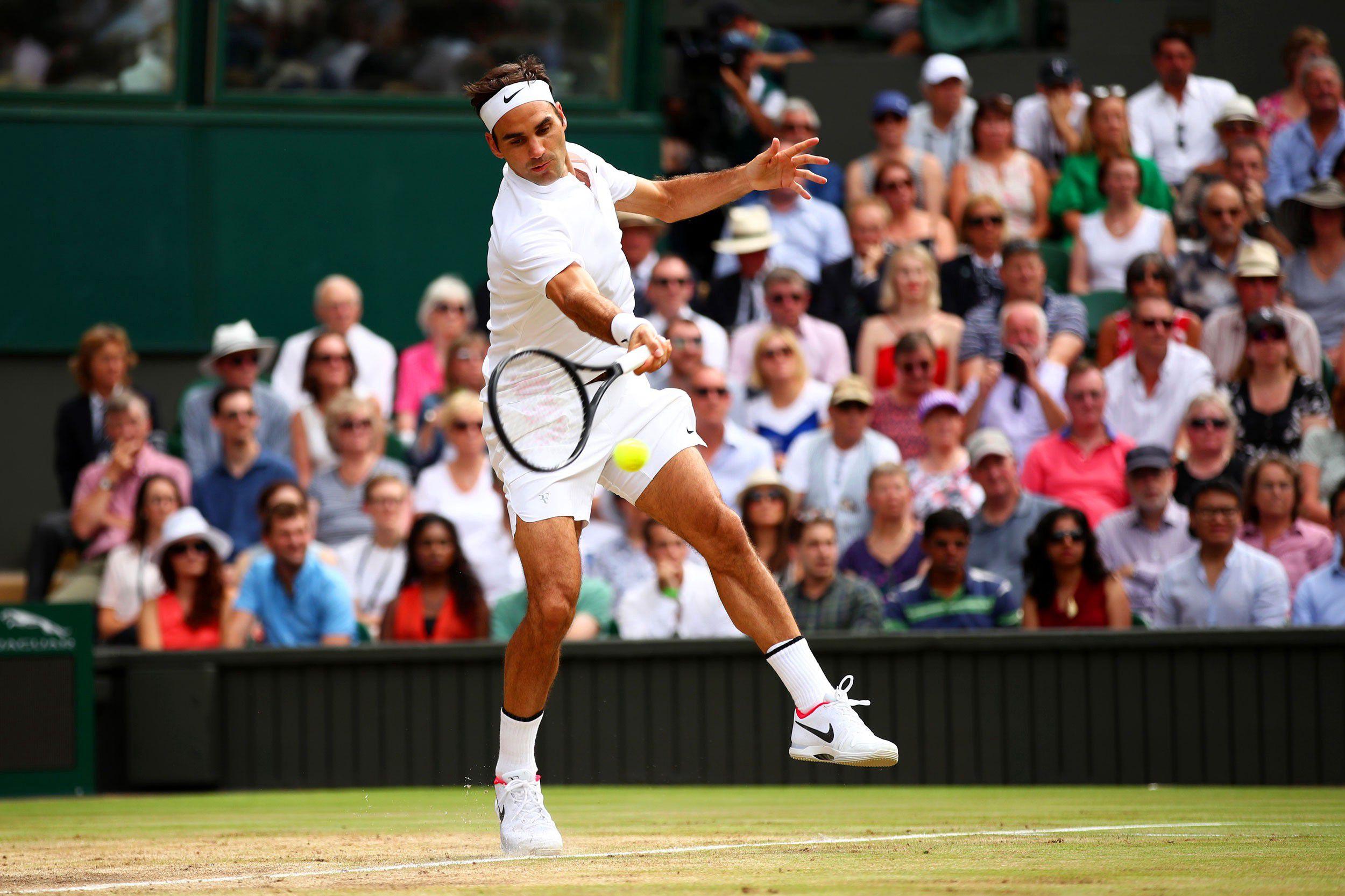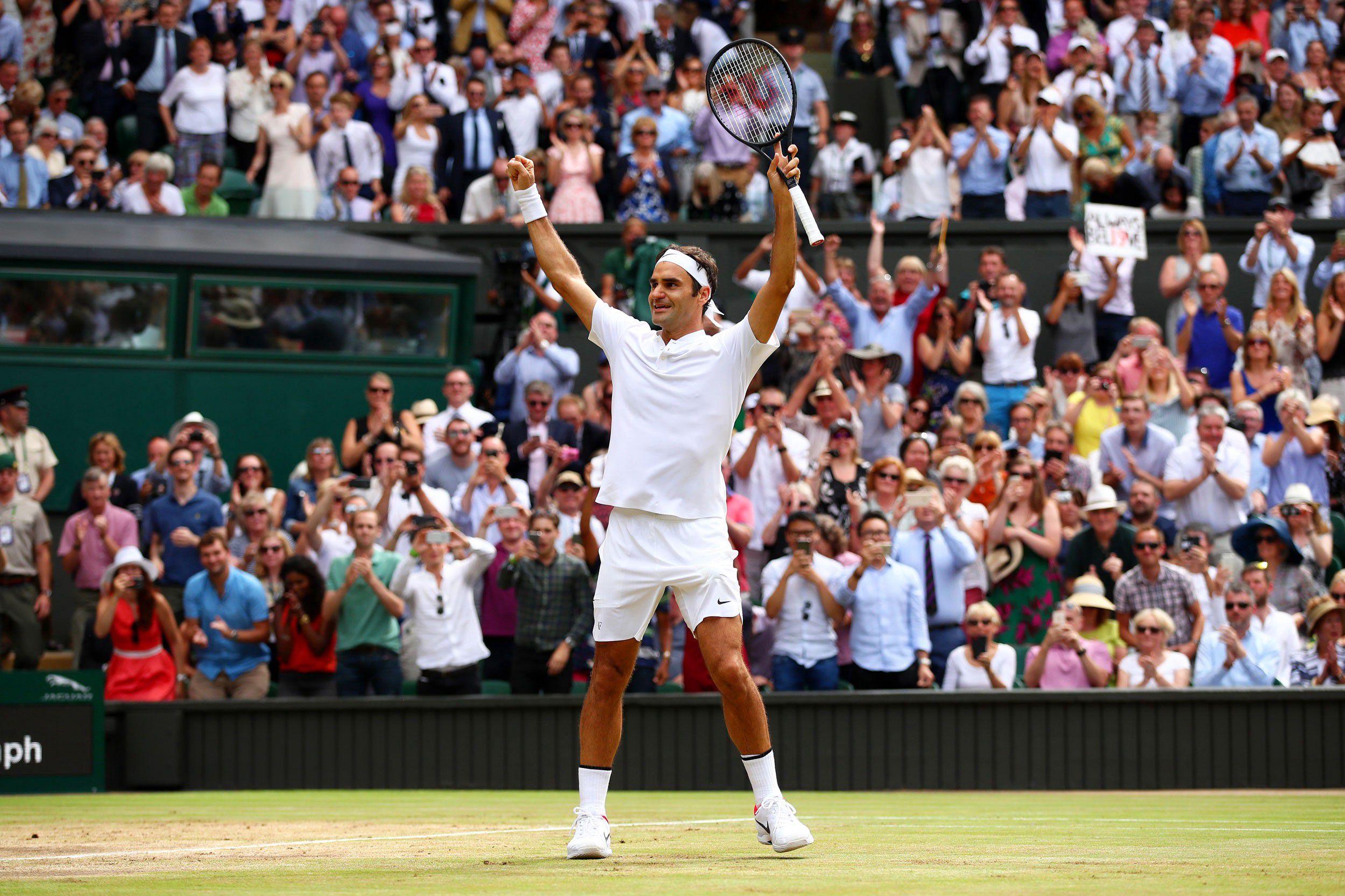This year’s men’s Wimbledon final was predictable. Marin Cilic, the 6-foot-6 Croatian with one of the biggest serves in the game, faced long odds before he ever took the court; Roger Federer had easily dismissed two similar 6-foot-5 challengers in his previous two matches. Back in 2016, a big serve and a little luck may have been enough to down Federer. This year, it quickly became apparent that a usurper would need far more versatility and guile.
Federer is an anticipatory genius under average conditions, and entered Sunday having just seen and defeated several of the tour’s fastest serves. Cilic, meanwhile, had no new tricks in his bag, and was hampered by a foot injury that forced him to call his trainer at multiple times during the match. The result was lopsided: Federer feasted in return games, and won service games in blinks. The final ended in an hour and 41 minutes, with three sets (6–3, 6–1, 6–4) featuring zero drama.

This wasn’t a show of force like Rafael Nadal’s triumph on the final Sunday of the French Open. Cilic wasn’t capable of pushing Federer to produce notable feats of Federer-ness, and Sunday’s top highlights didn’t come from moments of brilliance, but rather from seeing Federer operate at ease in his kingdom. He glided across the court, gashed the air with his forehand, and completed points with his reinvented, stinging backhand. He made it clear that tennis is a game of vision. Federer’s eyes locked onto Cilic’s service tosses from the beginning, and without steady confidence in his serve, Cilic was rendered helpless. This was a gross mismatch, certainly after taking note of the Croatian’s ailments, if not before.
The win, of course, will be reduced to a number. Federer captured his 19th major championship and his eighth Wimbledon crown. He now has more singles titles than any man in the history of the tournament, surpassing Pete Sampras’s Open-era mark. Federer delivered a record-setting victory, yet it felt preordained. This run didn’t contain the element of surprise that his 2017 Australian Open win did, an event the history books will likely pinpoint as the most pivotal in his late-career renaissance. Especially with Nadal, Novak Djokovic, and Andy Murray all eliminated by other players, this Federer title will presumably fade into the background.
After the last point of the final, Federer didn’t fall to the turf as he did after winning previous Wimbledon championships. Instead, he raised his arms and walked to the net, closing the afternoon with a whimper.

It’s hard to tell what this means for Federer in 2017. Since January he’s won more titles than anybody else on tour, and despite skipping the clay season is a close second in this year’s race for the top ranking. He won Wimbledon without dropping a set, becoming just the second man in the Open era to do so after Bjorn Borg did it in 1976. Federer might be playing his best tennis in years, or he might just be rolling over suddenly charitable competition. Either way, he’s earning titles at a prime-level clip after five years of struggling to string runs together at all.
There are surface-level changes that can help explain this recent surge. Coverage of nearly every Federer match has highlighted the main bullet points: He’s grown used to his bigger racket and its more forgiving sweet spot; he opts for a flat backhand drive instead of the slice he preferred in the past, allowing him to play a more effective offensive game; and his decision to skip the entire clay season, including Roland Garros, clearly aided his effort to stay healthy more than it caused him to accumulate rust. Most importantly, Djokovic and Murray are not playing anywhere near the level they maintained over the past few seasons.

To that end, while this year’s Wimbledon may not have provided one of the more exciting editions of the tournament in recent memory, that’s only because Federer’s stronghold on being the favorite was never in doubt. It’s extraordinary enough that Federer was able to keep that status for more than a decade earlier in the 2000s; it’s astonishing that he’s climbed back to that perch — not only the best, but unassailable.
In April, after Federer beat Nadal to win the Miami Open, I wrote that he was being rewarded for persevering through a stretch of exceptional, but diminished results. He’d repeatedly lost to Djokovic and Nadal as both enjoyed their primes, ceding his aura of invincibility in the process. To many athletes, this would have been a signal to retire, or at least would’ve resulted in mental lapses and a spotty match record. To Federer, it was nothing more than a test of patience, as he believed in his own abilities and felt he could keep beating the field until his rivals fell back to earth. Putting aside the modern notion that only a fellow Big Four member can ever truly compete with Federer, his draw at Wimbledon was filled with grass-court power players. That it looked like a cakewalk on paper is a testament to the expectations Federer established throughout his career; that it unfolded so simply in reality is a testament to the level at which he’s playing now.
Federer appears a step quicker than he used to be. His competition appears two steps slower. Only six months after returning from an injury-spurred break from competitive tennis, he’s sitting atop the tour once again. In a span of just six months, Federer has gone from a dead man walking to the type of rare player whose dominance we take for granted.
To be both great and unexciting, an athlete needs total, uncompromising control over a sport. There can be no whiff of competition, no realistic threat of a challenge. No accomplishment, however significant, can feel novel. This was the case with Federer at his peak, when he was untroubled by injuries and the question wasn’t so much whether he would win a tournament; it was how. Federer’s most remarkable achievement of the past two weeks is returning to that vaunted air. He’s back to being a given, having converted the tennis world back into true believers after a period of vulnerability in which he won just one of 25 majors.
The courts at the rest of the year’s relevant tournaments are fast. Federer has eaten well during former North American hard-court swings, and if he chooses to play the indoor season, he’ll do so in favorable conditions. As the tour is currently constituted, Federer will head into the U.S. Open as the unmistakable favorite, and he’ll retain that distinction into the future. Somehow, again, it’s not a question of whether Federer will win more tournaments; it’s a question of how many.